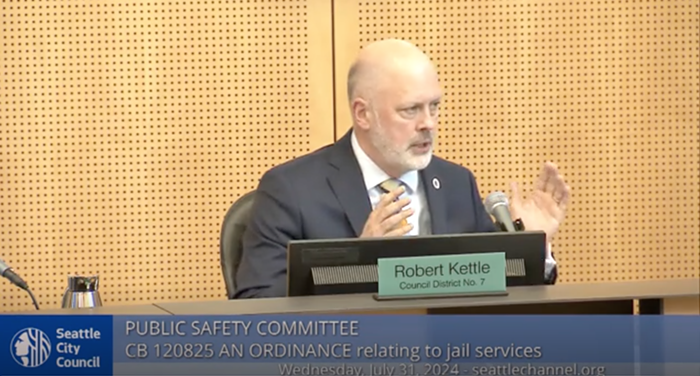
The Stranger has lost count of how many times Washington State Attorney General Bob Ferguson has sued the Trump administration. It's at least 17. And every time he does, he gets a wave of fanfare from Seattleites.
But the Attorney General also has the duty of defending the state from lawsuits. And sometimes, those lawsuits make a lot of fucking sense.
Take for example, the culverts case. The lawsuit began in 2001 when 21 tribes sued Washington State over state roads with tiny culverts that restrict salmon migration, and therefore reduce the ability for salmon to spawn, and limit tribes' treaty fishing rights.
The state even acknowledges these badly designed culverts are a major problem:
But for the last two decades, Washington has been fighting with everything it's got to resist replacing these culverts by court order. In 2013, a court ruled that Washington had to replace the culverts, which the state then appealed to the Ninth Circuit. The Ninth Circuit agreed with the lower court's ruling—that treaty tribes had a right to the have salmon protected by the state— and refused to try the case again. Still, the attorney general and the state fought back, petitioning the US Supreme Court for review. Today, the Supreme Court agreed to take up the case.
"Salmon are vital to our way of life here in Washington," Ferguson said in a statement. "Regardless of the outcome of this case, the state must do more to restore salmon habitat. The Legislature should not need a court order to fix culverts that are blocking salmon runs."
The state legislature can't even fund public schools. The idea that state legislators would suddenly decide to prioritize salmon over, say, politically damaging traffic concerns is fantasy.
Which the tribes know very well.
“Instead of continuing to appeal the culvert case, tribes believe the state should use the momentum it has gained over the past four years to finish the job of fixing fish-blocking culverts, and focus on our shared goal of salmon recovery,” Lorraine Loomis, chair of the Northwest Indian Fisheries Commission, said in a statement. “The state’s decision to further appeal the case only serves to delay salmon recovery and divert attention from protecting and restoring salmon habitat.”
Ferguson and the state argue, however, that the bad culvert design came from the federal government in the first place, and the Ninth Circuit's decision would force the state to remove even harmless culverts.
"The decision requires the state to replace culverts even when other barriers, such as dams or federal culverts, block salmon from ever reaching the state’s culvert," Ferguson added in his statement. "Money squandered on such projects could and should instead be used for more effective salmon restoration efforts.”
Washington State had 1,000 salmon-blocking culverts back in 2001. The state has fixed many of those culverts since then, but still has 393 to go. According to the Northwest Indian Fisheries Commission, an organization that supports the state's tribal fisheries, it would take the state another century to fix the remaining culverts at its current rate of repair.
"We are losing the battle for salmon recovery because we are losing salmon habitat faster than it can be restored," Loomis added in her statement. "The culvert case offers a rare opportunity to achieve a net gain in habitat that salmon desperately need."
And now, the US Supreme Court will decide.


















